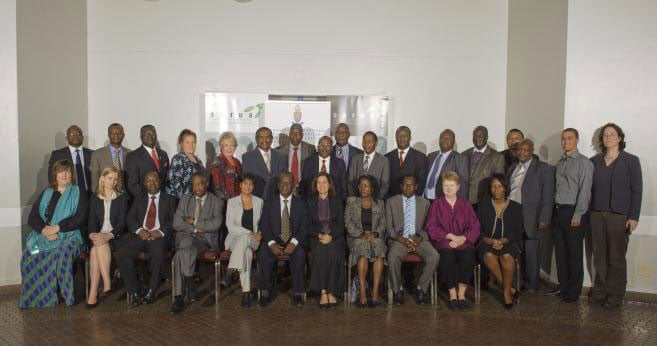Delegates benefited from presentations made on the latest available statistics, trends and key features of student and staff mobility by international and regional experts representing organisations including the UNESCO Institute for Statistics and the OECD Centre for Educational Research and Innovation. The statistics presented confirmed that student mobility continues to grow and has increased three-fold since 1980 to 3.4 million students in 2009. Students from Sub-Saharan Africa account for 4.8% of this number, second only to students from Central Asia (5.7%) and this is more than double the world average (2.1%). Patterns of outward student mobility in SADC continue to reflect a mix of linguistic and colonial bias with destinations such as the United Kingdom, France and Portugal outside the region receiving large numbers of students. However, it is noteworthy that about 50% of mobile students in the SADC region remain in the region by studying in another country in the region. The majority of these students study in South Africa, which ranks as the 11th biggest host country worldwide. The increase in student mobility in SADC takes place despite continued expansion and access to higher education in Sub-Saharan Africa with enrolment numbers increasing from 2.2 million in 1999 to 4.5 million in 2008.
Concerns of commercialisation and competitiveness drive the development agenda in other regions of the world. Moreover, the focus in many regions is on expanding higher education provision to capture increasing share of the educational services market following its liberalisation in the wake of the General Agreement on Trade in Services (GATS). Increasingly novel institutional models and a multiplication of commercial arrangements are emerging as part
Southern African Regional Universities Association (SARUA)
of this process of delivering cross-border education and include the establishment of branch campuses, forging partnerships through franchising and partnerships or buying foreign institutions. A word of caution was sounded by the South African Minister of Higher Education and Training Dr Nzimande in his address to delegates, when he cautioned that “while we may wish to continue, and in some cases expand academic mobility, we surely cannot accept uncritically a process which has helped to educate many Africans, and has also contributed to the loss of critical human resources to our continent.” Delegates at this Leadership Dialogue emphasised the need for us to promote academic mobility in SADC for the purposes of expanding access, improving quality, sharing resources and strengthening the sector in the region rather than for commercial gain.
Universities in the region have employed a range of measures to promote academic mobility with a view to accelerating staff development and supporting postgraduate education in particular. These strategies include innovative staff exchange initiatives, twinning or co-badging of programmes, co-supervision, sandwich programmes and joint degrees. In addition, options for strengthening staff capacity in terms of both absolute numbers and mentoring young academics were discussed. The unique example of the Diaspora Lecturer Temporary Return Project, a partnership between the Zimbabwe Council on Higher Education, SARUA and the International Organisation for Migration, offered insights into a possible model for encouraging the return of academics in the Diaspora on a short-term basis. This project facilitated the return of 59 academics during the final quarter of 2010.
Delegates identified the need to work towards the development and implementation of a structured, systemic and sustainable model of regional mobility with a focus on building the capacity of the higher education sector in the region. The focus of such a model should be the accelerated capacity building of staff and support for post-graduate education. Such a model should be premised on clearly defined goals and objectives for promoting regional academic mobility and should be based on principles which encourage mutual benefit and reciprocity, given the uneven feature of the higher education system in the region. It should be informed by a sound information base that draws on empirical data about the needs of universities and the potential contribution of each. The need for mobilising government support was acknowledged as critical in this endeavour.
Delegates at the SARUA dialogue

Get Social With Us
Download the UP Mobile App